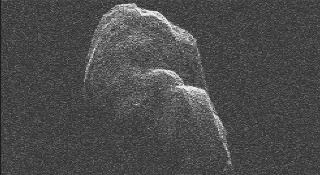Altitude 899 m | Established 1985 | |
 | ||
Website Asteroid Radar Research Similar Goldstone Deep Space Co, Mojave Desert, Magdalena Ridge Observatory, Arecibo Observatory, Green Bank Telescope | ||
The Goldstone Solar System Radar, or GSSR, is a large radar system used for investigating objects in the Solar system. Located in the desert near Barstow, California, it comprises a 500-kW X-band (8500 MHz) transmitter and a low-noise receiver on the 70-m DSS 14 antenna at the Goldstone Deep Space Communications Complex. It has been used to investigate Mercury, Venus, Mars, the asteroids, and moons of Jupiter and Saturn. The most comparable facility is the radar at Arecibo Observatory.
Contents
Planetary observations
GSSR can work in two different modes. In the monostatic radar mode, GSSR both transmits and receives. In bistatic mode, GSSR transmits and other radio astronomy facilities receive. Although more difficult to schedule, this offers two advantages - the transmitter does not need to turn off to allow the receiver to listen, and it allows the use of interferometry to extract more information from the reflected signal.
Bodies that have been investigated using GSSR include:
